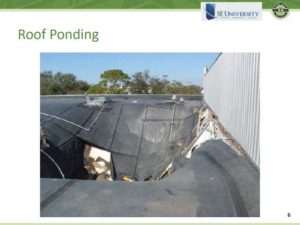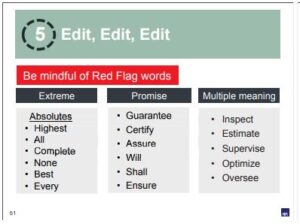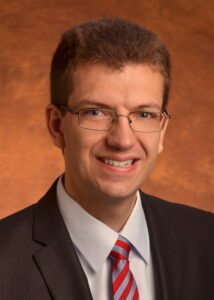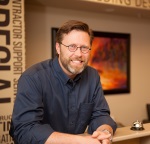26 Jan 2021
Mental Fitness in 2021
A recent study by Oracle found that 78% of employees in 2020 were negatively impacted by their mental health. While 2020 may have been the most stressful year in recent history, 2021 offers the possibility of new habits, positive intentions, and boundless hope for improved work satisfaction.
As remote working continues for some and social distancing remains the norm in office environments, how can employees positively impact their mental health while remaining socially safe during the remainder of this pandemic and into an uncertain future? As it turns out, many companies are taking note of the mental health status of the workforce and developing new ways to offer emotional support for workers.
New technologies have scaled at a rapid pace to meet the mental and physical health needs of a socially distanced population. Apps such as Calm, Headspace and Insight Timer offer guided meditation, mindfulness tips, and calming music to improve sleep. For more active learners, MindDoc or Happify offer daily exercises and evaluations to identify ways to change your cognitive behavior.
Many workers have vowed to make positive changes to their health in 2021 and mental health deserves equal ground with physical health. With many gyms and sports programs across the country still closed or at reduced capacity, fitness apps such as Peloton, DownDog, All / Out Studio, or Aaptiv can fill in the gaps for missing workouts. Physical health certainly promotes mental health, so it is essential to maintain a healthy balance to see improvement.
Take time this year to invest in maintaining balance in all aspects of your health. Modern technologies are available and created specific for workers suffering from anxiety, burnout, depression, and loneliness. Many apps are available for free or offer free trials which can give you a window of opportunity to create a new, healthy habit in 2021.
In December 2020, SE University welcomed Mike Antici, PE, from Nucor / Steel Deck Institute, to present Steel Deck Design for Concentrated and Non-Uniform Loads. Mike designated Harvest Hope (https://www.harvesthope.org/) for our SEU Speaker Inspires donation for the month.
Mike shared that he selected Harvest Hope because it is “a local food bank providing food for South Carolina’s most vulnerable citizens – children, seniors, and rural residents who don’t have access to grocery stores. We also run our own emergency food pantries where anyone in need can get a week’s supply of groceries for free. Nucor is a contributor to Harvest Hope.”
Thank you, Mike, for helping structural engineers with your SE University session, and for your designation of Harvest Hope as our SEU Speaker Inspires Organization of the Month!
SE University began the SEU Speaker Inspires program in 2015 as a way to “pay it forward”, enabling our speakers to designate a charity/organization of their choice for SE University to make a donation to help improve our world.
31 Dec 2020
Zoom Meeting Etiquette for Professionals
2020 may be coming to a close, but the age of social distancing isn’t a thing of the past quite yet. As more states face second shutdowns, and holiday travel may have people meeting on the go, online video conferencing has become a new normal for professionals and engineers are not immune.
Video conferencing tools such as Zoom, Skype and Microsoft Teams are essential tools during this time of working remotely, but engineers should adhere to some basic etiquette rules to maintain their professionalism. First, as with typical office meetings, do your prep work ahead of time, and that now includes your own tech support. Services such as Zoom offer a way to test your settings before the meeting goes live at zoom.us/test. Skype also offers a way to test your call through their Echo / Sound Test Service in your contacts tab. Having all the kinks worked out of your audio/video settings before the meeting will avoid any embarrassing delays on your account.
Next, be sure to create a professional environment for your virtual meeting. Notice what lies behind you, but within your camera’s view. Your co-workers or clients should be spared any distractions which may be viewable through an open window in your office or other members of your household moving around during the call. If you are unable to meet in a quiet workspace, virtual backgrounds can be used to eliminate distractions. You should also dress appropriately and ensure proper lighting in the room so all attendees can see your face clearly throughout the meeting.
After the meeting has begun and all attendees have been introduced, be sure to keep your audio on mute to prevent any background noise from interrupting the speaker. When you are speaking, be sure to look into the camera rather than at your face so that you appear to be making eye contact.
As with an in-person meeting, you should avoid answering other emails or text messages during your virtual meeting. Although you may think you can get away with it, other participants may notice you seem distracted or dismissive. Be attentive and realize that non-verbal communication, such as head nods or hand raises, can be crucial to moving business along quickly when meeting virtually.
Unless you have disclosed to the host that you need to leave early, you should remain on the call until the host announces the completion of the agenda. If the meeting runs over the allotted time, you may politely interrupt if there is an appropriate pause from the speaker, or leave a comment in the chat feature, to inform the host that you have another obligation to attend to, and then you may need to follow up to see what was discussed during your absence.
Zoom, Skype, and Microsoft Teams all offer their own tips for attending and hosting virtual meetings, so be sure to check out their platforms to learn more about ways to improve communications when meeting virtually. While some businesses may return to a pre-Covid existence, many will continue to operate remotely in the future, so maintaining professional habits when meeting virtually will be a new skill employers require in their workforce.
What happens to a concrete mix when you add additional cement to the mix design? Most structural engineers would surmise that you would get a bump in concrete strength, but is that the only effect on the concrete mix? How can engineers specify a design that avoids excessive drying shrinkage? Are you familiar with the various components in a concrete mix design and their effect on the overall performance of the concrete?
In September 2020, Otto Schwarz, PE, SE, from Ryan Biggs | Clark Davis presented Concrete Mix Design for SE University. Otto reviewed the composition and curing process of structural concrete and explained the function and roles of pozzolans or supplementary cementitious materials and admixtures. He also advised on what to look for in a Concrete Mix Design Review and how to qualitatively predict the relative behavior of a concrete mix design.
In order to approximate the performance of comparative mix designs, Otto gave some guidelines as to the relative effects from varying components being added to the mix design. Watch this short video clip to hear Otto explain how the addition of these components affect the concrete mix:
As Otto explained, the varying components can affect the strength, slump, shrinkage, workability, etc. Knowing these relative effects, the engineer can approximate ways to manipulate the mix design with favorable results. Also, engineers can be more aware of the effects from any changes to the mix that were made in the field and better predict the result from those field changes.
In November 2020, SE University welcomed Mark D. Denavit, PhD, PE, from University of Tennessee – Knoxville, to present New Methods for Ponding Analysis of Open Web Steel Joist Roofs. Mark designated World Wildlife Fund (https://www.worldwildlife.org/) for our SEU Speaker Inspires donation for the month.
Mark shared, “I have a three-year-old son. We love watching nature documentaries together, especially ones by David Attenborough. I was inspired to select the World Wildlife Fund after watching David Attenborough’s recent film, A Life on Our Planet. It was amazing to see how much that planet has changed over the span of one lifetime. Also amazing was his vision for the future which I found inspiring and hopeful. I am happy to support efforts that align with that vision..”
Thank you, Mark, for helping structural engineers with your SE University session, and for your designation of World Wildlife Fund as our SEU Speaker Inspires Organization of the Month!
SE University began the SEU Speaker Inspires program in 2015 as a way to “pay it forward”, enabling our speakers to designate a charity/organization of their choice for SE University to make a donation to help improve our world.
24 Nov 2020
Strategies to Address Ponding Loads
 What is the best way to avoid a potentially catastrophic roof collapse due to ponding instability? Once you have determined that ponding could be an issue for your roof design, what is the most efficient way to improve the design to ensure adequate strength and stiffness to resist ponding?
What is the best way to avoid a potentially catastrophic roof collapse due to ponding instability? Once you have determined that ponding could be an issue for your roof design, what is the most efficient way to improve the design to ensure adequate strength and stiffness to resist ponding?
In the November 2020 SE University session, Mark Denavit, PhD, PE, from the University of Tennessee, Knoxville, presented New Methods for Ponding Analysis of Open Web Steel Joist Roofs. Mark’s session reviewed the main roof ponding requirements from design standards and described the limitations of the method of ponding analysis given in Appendix 2 of the AISC Specification. Mark demonstrated how to use the SJI Roof Bay Analysis Tool to determine the stability of a simple roof system and explained the main factors influencing the ponding stability of open web steel joist roofs.
When possible, Mark recommended to first avoid developing ponding loads on roofs by providing adequate slope to a free draining edge. This can be achieved by sloping roof members or using tapered insulation or sloping fill. Mark helpfully noted that parallel chord joists with end supports at different elevations are more economical than providing pitch into the joist top chords.
When ponding must be evaluated, the SJI’s Roof Bay Analysis Tool can be used to quickly and easily determine whether the roof framing is sufficient to resist ponding. If the tool shows that the roof is inadequate, aim to stiffen the roof members to reduce the additional load caused by ponding, or strengthen the roof members to resist the additional load. If possible, you may consider adjusting the shape of the roof to reduce the additional loads from ponding, or you may need to use a combination of these adjustments to reach a stable roof design.
24 Nov 2020
“SEU Speaker Inspires” Organization of the Month: Structural Engineers 2050 Commitment Program SE2050
In October 2020, SE University welcomed Megan Stringer, PE, SE, and Gina Kope, PE, from Holmes Structures, to present Sustaining Structures: Embodied Carbon. Megan and Gina designated SE2050 (https://se2050.org/) for our SEU Speaker Inspires donation for the month.
Megan shared, “The Structural Engineers 2050 Commitment Program (SE 2050) is the U.S. structural engineering profession’s response to getting to net zero embodied carbon by 2050. I have been inspired by my fellow SE 2050 committee members and the volume of work a volunteer group of structural engineers have be able to accomplish in a short amount of time.”
Thank you, Megan and Gina, for helping structural engineers with your SE University session, and for your designation of SE2050 as our SEU Speaker Inspires Organization of the Month!
SE University began the SEU Speaker Inspires program in 2015 as a way to “pay it forward”, enabling our speakers to designate a charity/organization of their choice for SE University to make a donation to help improve our world.
27 Oct 2020
Fly Ash, Slag, or Silica Fume?
When specifying your Concrete Mix Designs, are you aware of the cost implications of pozzolans or supplementary cementitious materials included in your mix? Is fly ash, slag, or silica fume more costly and how much is needed to achieve a mix with the same 28 day strength?
In September 2020, Otto Schwarz, PE, SE, from Ryan Biggs | Clark Davis presented Concrete Mix Design for SE University. Otto reviewed the composition and curing process of structural concrete and explained the function and roles of pozzolans or supplementary cementitious materials and admixtures. He also advised on what to look for in a Concrete Mix Design Review and how to qualitatively predict the relative behavior of a concrete mix design.
Otto showed a visual which explains the Strength Activity Index for different pozzolans and supplementary cementitious materials and relates these to the costs for each material. To hear Otto’s explanation, watch this short video.
As Otto explained, the material costs will obviously vary greatly depending on region, but in most cases, substituting fly ash or slag in place of silica fume will save on the overall cost of the mix. Also, you can see the pound for pound replacement needed for each material to portland cement in order to produce a mix with the same 28 day strength. Engineers should be aware of the cost implications and effectiveness when specifying pozzolans and/or supplementary cementitious materials in their concrete mix designs.
27 Oct 2020
10 Steps for Optimal Email Communication
Email communication has become the primary way engineers communicate with clients, contractors, and consultants. It can become habitual to send off a hasty request or an immediate reply without careful consideration of the language used and whether the topic should be handled via email or whether a phone call may be more appropriate. What standards do you use when deciding what gets addressed via email and how can you use emails appropriately and without unnecessary risk?
In the August 2020 SE University session, Jamie Piercy, from PCIA, presented 7 Deadly Email Sins. Jamie explained some best practices for writing well-crafted emails that are clear, concise and actionable. Jamie also presented examples from actual claims cases and disputes to identify inappropriate text and discussed alternative language in emails. She helped participants to recognize email communication which could create a misunderstanding, exacerbate an issue, or implicate the sender in a claim. Alternate methods of communication were also discussed and recommended in some instances.
Jamie offered 10 steps for best practices when writing emails:
- Know your purpose – Jamie recommends emails be used for the purposes shown below. Any other topics of sensitive nature which may be contentious should be dealt with verbally.

- Strong subject line – Your subject line should clearly state the key message of the email to compel the recipient to open the email. When replying to an email thread, you should create a new message with a new subject line to address the current issue to allow for quick reference in the future..
- Bottom line upfront – Avoid burying any conclusions or recommendations within a lengthy email. The intent should be stated within the first two lines of your email.
- One topic – Keep your emails simple and focused on one issue, decision, request or question.
- Edit – Avoid the use of ‘red flag’ words which can raise the standard of care on projects.

- Concise – Aim for well-organized emails with short sentences that can be scanned quickly.
- Clear Ending – Clearly tell the recipient what they need to do or not do in response to the email.
- Proofread – Checking for spelling and grammar is necessary, but using tools to delay your sent messages or waiting to insert the recipient’s name until the email is complete can prevent incomplete emails from being sent.
- Confidential – ALL EMAILS ARE DISCOVERABLE. Even internal discussions should be treated as though they will be read by the client, and should not contain private, confidential or incriminating information. Care should also be taken to note who is included when you ‘Reply All’ to an email, and whether each person should be included.
- Litmus Test – Jamie suggests asking yourself whether the email may be surprising to the recipient. Should you wait to send the email when you feel less emotional? Would you feel comfortable receiving the email yourself, or delivering it face to face, or reading it aloud on a witness stand? Some sensitive topics should warrant a phone conversation or face to face meeting.
While Jamie focused mainly on email communication, the same rules should be applied to any written form of communication, including text messages and office chat features. While texts and chats can be useful for quick comments, they should be avoided when making changes or revisions on a project or resolving problems. Email should be used to document such critical information. Using these 10 steps to guide your email communication can reduce confusion, enhance your reputation, and prevent costly errors if claims are brought on a project.
In September 2020, SE University welcomed Otto Schwarz, PE, SE, from Ryan Biggs | Clark Davis, to present Concrete Mix Design. Otto designated CREATE Community Studios (https://createcommunitystudios.org/) and Institute for the Musical Arts (www.ima.org) for our SEU Speaker Inspires donations for the month.
CREATE Community Studios exists to ensure the beneficial experience of art-making be affordable and accessible to everyone. Their goal is to use expressive arts as an equalizer across cultural and economic barriers, and for participants to learn how to use art as an expressive medium to increase their general well-being.
The Institute for the Musical Arts in Goshen, MA supports women and girls in music and music-related businesses.
Otto commented, “I’ve suggested both of these local organizations for two reasons. The first is that I believe that the arts and the sciences have equal impact on our lives, and a world without either is lacking. Small, local organizations like these have the most direct and intimate impact on the surrounding communities and the individuals within them. The second is that it is these same small organizations that will have been disproportionally hit by the COVID-19 epidemic and a dollar donated here has a bigger impact than a dollar donated to an organization that has a national supporting audience. As the economy re-adjusts in response to times like these, it is often the arts that suffer first and the most. We should strive to ensure they survive.”
Thank you, Otto, for helping structural engineers with your SE University session, and for your designation of CREATE Community Studios and Institute for the Musical Arts as our SEU Speaker Inspires Organizations of the Month!
SE University began the SEU Speaker Inspires program in 2015 as a way to “pay it forward”, enabling our speakers to designate a charity/organization of their choice for SE University to make a donation to help improve our world.





